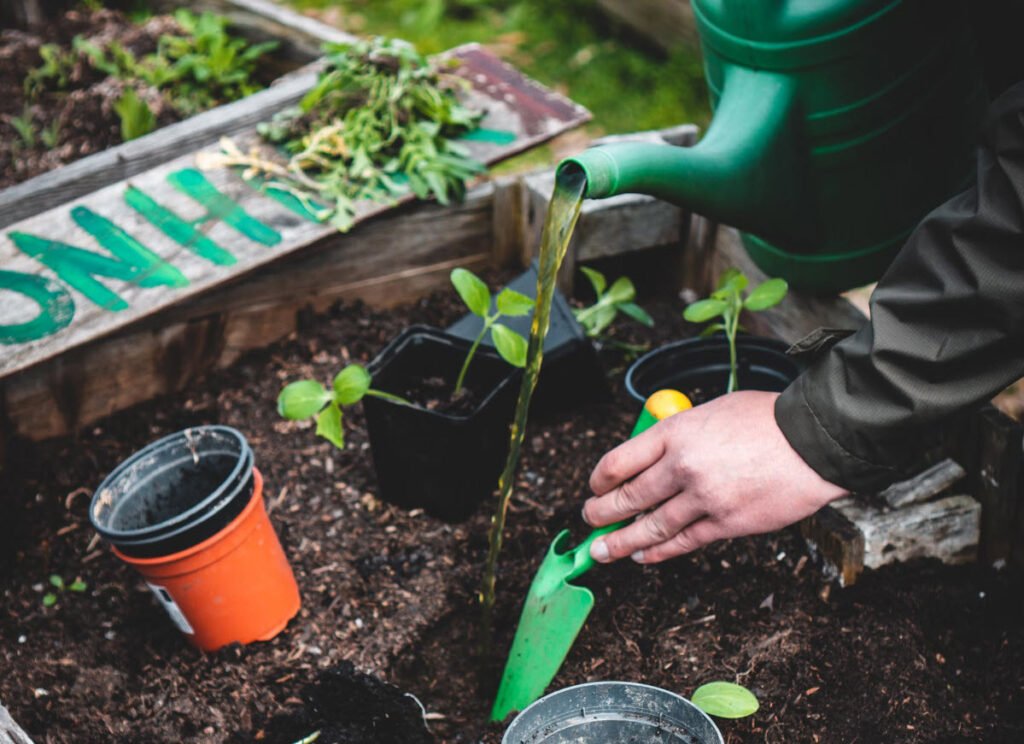Home gardeners are among the first to witness the impacts of climate change in their own backyards. They see soil erosion from increasingly harsh weather, notice fewer pollinators due to the lack of native plants, and experience the consequences of poor gardening practices. However, it’s not too late to make a difference.
As a climate-friendly gardener, you can turn your little patch of earth into a haven that not only sustains your family but also contributes positively to the environment.
Here’s a guide to the essential gardening tools and practices that can help you garden sustainably and mitigate climate change.
1. People Power
One of the simplest ways to reduce your carbon footprint in the garden is to use manual tools instead of those powered by gas or electricity. Hand tools such as shovels, rakes, hoes, and pruning shears are not only better for the environment, but they also offer you a closer connection to your garden.
The use of manual tools encourages a slower, more mindful approach to gardening, allowing you to observe and respond to the needs of your plants more closely.
Gas-powered tools, such as lawnmowers and leaf blowers, contribute significantly to carbon emissions. By choosing manual tools or even electric alternatives, you can help reduce these emissions. A little physical labor can also be a good exercise, making you healthier along with your garden.
2. Rich Soil
Soil health is the cornerstone of any successful garden. Healthy soil not only supports plant growth but also plays a crucial role in carbon sequestration. Plants absorb carbon dioxide from the atmosphere and convert it into sugars and starches, which combine with other types of carbon in the soil to form the organic matter that feeds the entire ecosystem.
To cultivate rich soil, avoid using synthetic fertilizers and soil amendments. These products often contain chemicals that can harm the microbial life in the soil, leading to reduced fertility over time.
Instead, focus on natural methods to enrich your soil, such as adding compost, mulch, and organic fertilizers like manure. Testing your soil regularly can help you determine the specific nutrients your garden needs, allowing you to tailor your amendments for optimal growth.
3. Composting Equipment
Composting is one of the most effective ways to reduce waste and improve soil health. By recycling kitchen scraps, yard waste, and other organic materials, you can create nutrient-rich compost that enhances your soil’s structure and fertility. All you need is a compost bin, a hand cultivator or fork to aerate the pile, and a screen to sift the finished compost.
A simple collection system for kitchen waste, such as a small compost pail or bin, can make it easy to separate compostable materials from your regular trash. As your compost pile matures, turn it regularly to promote aeration and speed up the decomposition process. The end result is “black gold” that your plants will love, and your garden will thrive.
4. Electric and Manual Mowers
For climate-friendly lawn care, consider replacing your gas-powered lawnmower with an electric model or, better yet, a manual push mower. Gas-powered mowers emit significant amounts of carbon dioxide and other pollutants, contributing to global warming. In contrast, electric mowers are quieter, produce no emissions at the point of use, and are often more energy-efficient overall.
Manual push mowers, on the other hand, are the ultimate eco-friendly option. They require no fuel or electricity and are much gentler on the grass. Push mowers cut grass more cleanly than their gas-powered counterparts, reducing the likelihood of disease and promoting healthier lawns.
5. Organic Fertilizers
Synthetic fertilizers are often derived from fossil fuels and can harm both the environment and your garden’s long-term health. Instead, opt for organic fertilizers, which are made from natural materials such as compost, bone meal, fish emulsion, and manure. Organic fertilizers release nutrients slowly, providing a steady supply of nourishment to your plants and promoting the development of healthy soil.
When choosing organic fertilizers, consider the specific needs of your plants and soil. A soil test can help you determine which nutrients are lacking and guide you in selecting the right organic fertilizer. Using organic matter not only reduces your garden’s carbon footprint but also helps create a more resilient ecosystem that supports a wide variety of beneficial organisms.
6. Chickens
Chickens can be a valuable addition to a climate-friendly garden. They provide a steady supply of nitrogen-rich manure, which is a key component of a balanced compost pile. Chickens are also excellent at controlling pests and weeds, as they love to scratch and peck at the soil, clearing it of unwanted insects and seeds.
One or two chickens can clear up to 50 square feet of garden space within six weeks, preparing it for planting without the need for synthetic herbicides or pesticides. Additionally, chickens produce eggs, which can be a sustainable source of protein for your household.
7. Cover Crops
Never leave your garden soil bare, as this can lead to erosion, nutrient depletion, and the spread of weeds. Cover crops, such as grains, grasses, and legumes, can help protect and enrich your soil during the off-season. These plants cover the soil, reducing erosion and suppressing weeds while also adding organic matter and nutrients as they decompose.
Leguminous cover crops, like clover and vetch, have the added benefit of fixing nitrogen in the soil, making it available for the next round of crops. By rotating cover crops with your main garden plants, you can maintain soil health and fertility year after year.
8. Trees and Shrubs
Trees and shrubs are essential tools for managing water runoff, reducing erosion, and creating microclimates in your garden. They provide shade, which can cool down hot spots in your yard, reduce the need for irrigation, and protect more delicate plants from harsh weather conditions.
When selecting trees and shrubs, choose native species that are well-adapted to your local climate and soil conditions. Native plants are more resilient, require less water and maintenance, and provide essential habitat for local wildlife, including pollinators.
Conclusion
By using these tools and adopting climate-friendly gardening practices, you can create a garden that is not only beautiful and productive but also environmentally sustainable.
Every small action you take in your garden can contribute to a larger effort to combat climate change. Imagine if every gardener chose to reduce their carbon footprint, enrich their soil naturally, and support local ecosystems – the cumulative effect could be profound.
Gardening is not just a hobby; it’s a way to care for the planet, one garden at a time.



